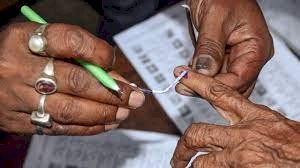Factors that will decide UP mandate
For Printing Download Epaper from files section from bottom of this page

When the parliamentary monsoon session will be over, the entire country will be discussing elections in Uttar Pradesh as it is going to be an important issue. As always, UP elections are a subject of immense importance because the state is the biggest in terms of Loksabha seats and the way for prime ministership goes from this state. BJP is holding the power equation in the state as well as centre. So, it is paramount important to know the factors that will decide the fate of UP elections. BJP is always in election mode and it has started its mission for many months. To get a glimpse of the Bharatiya Janata Party (BJP)‘s strategy for assembly elections in Uttar Pradesh (UP), following these four seemingly disparate developments over the past week can be considered. Firstly, Prime Minister Narendra Modi inaugurated a slew of projects in his constituency, Varanasi, accompanied by a social media offensive on how the city had transformed. As there are only some months left for the voting, Modi has shown the urgency to announce the development works. He tried to give a message that, only the Modi-led BJP can deliver the development of a backward state. Actually, there is some truth in his indirect message. Under the leadership of Yogi Aditynath, the state has changed quite a bit. Secondly, Chief Minister Yogi Adityanath spoke about the need for population control policies. This is the right strategy when we think in the context of an entire country. But, for BJP, it is an issue with communal nuances. The policy tacitly underlines the Hindutva political constituency which has been driven by (irrational) fears of changes in the Hindu-Muslim demographic balance for decades. The Hindu hardlines have been constantly creating fear in minds of Hindus about an increase in the Muslim population. On the other hand, Muslim hardliners have been always a powerful force as Muslims are generally not educated. In short, both hardliners have been successful about population narrative. Yogi Adityanath is trying to consolidate Hindus and deepen suspicion of Muslims with an eye on coming elections. Apart from the Hindu-Muslim crisis, the policy is aimed at garnering more votes for the saffron party. Thirdly, the Union government gave another extension to the commission for the sub-categorization of Other Backward Classes (OBCs) till January 2022. The message was clear to the non-dominant backward communities which have emerged as the BJP’s most critical base in the last seven years in UP; the government was committed to reallocating resources and opportunities within the OBC cluster. These communities have been main voters of BJP as we have seen in West Bengal, such communities have consolidated their support due to which, BJP took a leap from three seats in the assembly to 77. And finally, on Friday, the BJP national president JP Nadda chaired a working committee meeting of the UP unit, focused on boosting the organizational machine that has the formidable ability to create a “hawa”, a sense of inevitability of the party’s victory, and mobilizes voters on polling day. It is this mix of four cards, development, communalism, social engineering and organizational work, that will constitute the BJP’s toolkit for the UP elections. On the other side, Congress’s Priyanka Gandhi landed in Lucknow on Friday. But her reluctance to make the city her home base or be projected as the CM face, reliance on a small coterie of former left activists, and a depleted social base makes the Congress a marginal force. Congress will not be successful in the near future without solid leadership. Even if Congress declares Priyanka Gandhi as a chief ministerial candidate, it will not work for the grand old party. The Bahujan Samaj Party has been a declining force over the last four elections and Mayawati’s centralized style of functioning, absence of political groundwork (she doesn’t travel to districts and villages at all), eroded base and perception of having compromised with the BJP for protection has left the party a shadow of itself. The primary opposition in the state will remain the Akhilesh Yadav-led Samajwadi Party. Yadav is seen as a well-intentioned leader, but it isn’t clear if the party has been able to expand beyond its Muslim-Yadav base. It is this mix of variables that will determine the outcome of next year’s elections. These factors will decide the result of the UP elections which will further decide the mandate in the 2024 Loksabha elections.

 Active Times
Active Times 

















